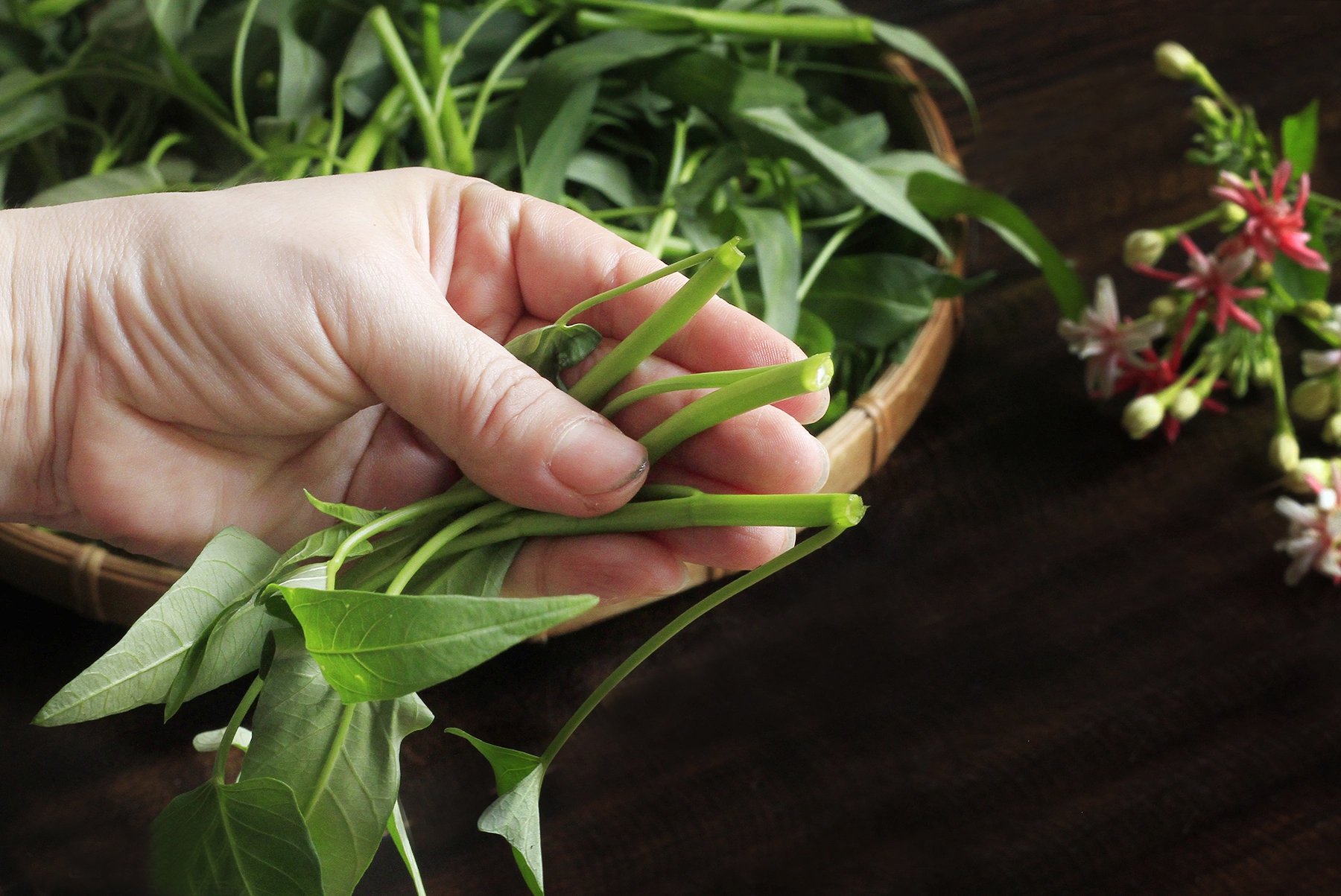Water spinach is a popular summer dish, especially boiled. Experienced cooks recommend pinching the stems a few centimeters before the nodes. Pinching after the nodes traps water in the stems, which reduces the boiling temperature, resulting in dull-colored and less flavorful greens.
Pinching water spinach by hand breaks the natural fibers of the connective tissue, minimizing cell breakage and the release of polyphenol oxidase, an enzyme that causes the vegetable to darken and lose its sweetness. This method also allows cooks to assess the tenderness of the spinach and adjust the length of the pieces for even cooking, preventing toughness and clumping.
 |
Illustrative photo: Bui Thuy |
For summer soups like crab and taro soup with water spinach, the stems are often snapped in half before being added to the pot. Snapping breaks the stems along their fibers, softening the tougher nodes and ensuring a pleasant crispness without sliminess or discoloration.
In today's fast-paced world, many casual eateries and industrial kitchens use knives to cut water spinach to save time. While efficient, this method compromises the flavor and appearance of the dish, making the vegetable prone to bruising, darkening, and losing its crispness.
From a chemical perspective, cutting with a metal knife ruptures more cells, activating enzymes like polyphenol oxidase, a catalyst for oxidation. This causes the spinach to darken quickly and develop off-flavors if left for too long.
The five elements theory in Asian cuisine also addresses this, suggesting that cutting with a sharp knife, an act associated with the hard metal element, can create imbalance if not done mindfully, leading to spoilage and reducing the dish's overall harmony.
According to Eastern culinary philosophy, a delicious meal depends not only on the ingredients but also on how they are prepared to suit the season and palate. Preparing water spinach by snapping, pinching, or cutting is not just a mechanical act but a nuanced interaction with the food, shaping the color, aroma, and essence of each dish.
Bui Thuy












